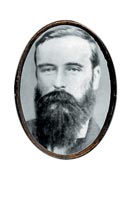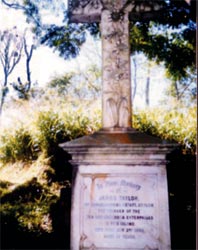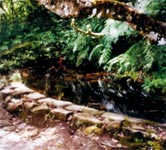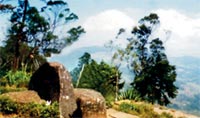
The tale of Ceylon TeaSri Lanka Tea industry commemorated the 125th death anniversary of James Taylor, the Father of the Tea Industry in Ceylon on 2 May.Taylor moved to then Ceylon in 1842, when he was 17 years old. After living for forty years in the country, Taylor contracted dysentery and died within two days in his log cabin on 2 May 1882 at Loolecondura Estate at the age of 57 years.
James Taylor was the son of a wheelwright. He was born on 29 March 1825, in a cottage called Mosspark on Mriboddo Estate in Kineardineshire, Scotland. His Parents were Michael and Margaret Taylor who had six children. The mother died when James Taylor was nine years of age. His father and the stepmother lost all love for young James.When he was 17 years old he came to Ceylon on 20 February 1852 on the ship called 'Sydney'. When James Taylor and his cousin Henry Steven arrived in Colombo in 1852 they were looked after by the Mackwood family. A few days later both of them left for Kandy.
Thereafter Steven found his way to Ancoombura Estate and Taylor arrived on Mr. Pride's Naranhena Estate, (now a division of Loolecondura and that time it was a coffee plantation). Taylor stayed at Naranhena for about six weeks before he was sent to Waloya, the adjoining Estate (also a division of Loolcondura) He settled down there in a temporary log cabin. His main task was to construct roads and the ground was contoured for planting of coffee with the help of two hundred labourers. He spent most of his time and money to achieve his goal and thereby satisfied his employers immediately. Taylor was a natural technician.In 1867 he cleared 19 acres in field no 07 and planted Tea and only 5 acres are in production at the moment. During the first decade of Taylor's stay in Ceylon he showed a keen interest in many things such as wild beasts, his flower garden, his coat and his beard, which he was mentioned in the letters written to his father. Taylor reminded a bachelor all his life. He took only one holiday during his 40 years.
Stint at Loocecondra Estate and that too he had spent about a fortnight in Darjeeling studying Tea. He had experimented by making tea in the Verandah of his log cabin. The leaf was hand rolled and the product had fetched a price of Rs. 1/50 in the local market. Later James Taylor designed a tea roller run by a water wheel. This was the first stepping stone in the present tea industry. In appreciation of the services rendered by James Taylor to the Tea Industry the Planters' Association awarded the Silver Tea Service to him. He not only started Commercial Tea for the tea industry, but also started the Planting of Cinchona in Ceylon. As the quality of tea produced by him was very high, he obtained a high price for his tea at the London Tea Auction in 1873.
The well and the Chimney of his log cabin still exist and could be seen at Loolecondura Estate. In the excavations, a grinding stone, his tobacco pipe and his plate, the wheel of his rickshaw were found and could be seen at the Tea Museum in Hantana, Kandy. (A Special word of thanks should go to Sunimal Fernando (Tea instructor / Tea Inspector) of Sri Lanka Tea Board for helping us in finding facts of James Taylor) |
|| Front
Page | News | Editorial | Columns | Sports | Plus | Financial
Times | International | Mirror | TV
Times | Funday
Times || |
| |
Copyright
2007 Wijeya
Newspapers Ltd.Colombo. Sri Lanka. |



